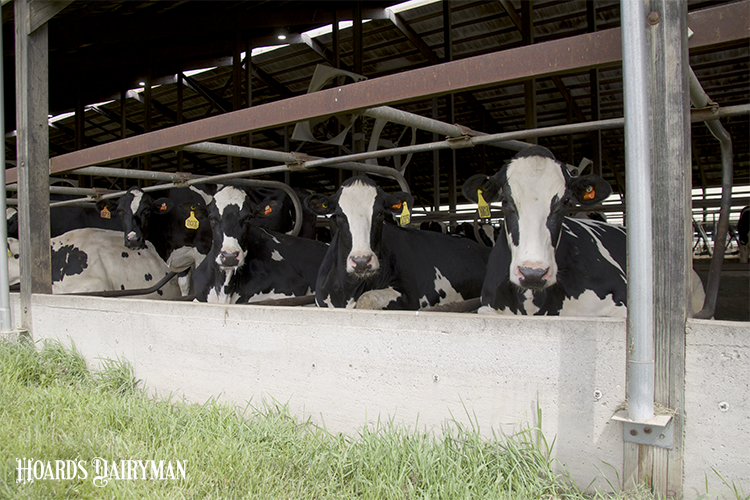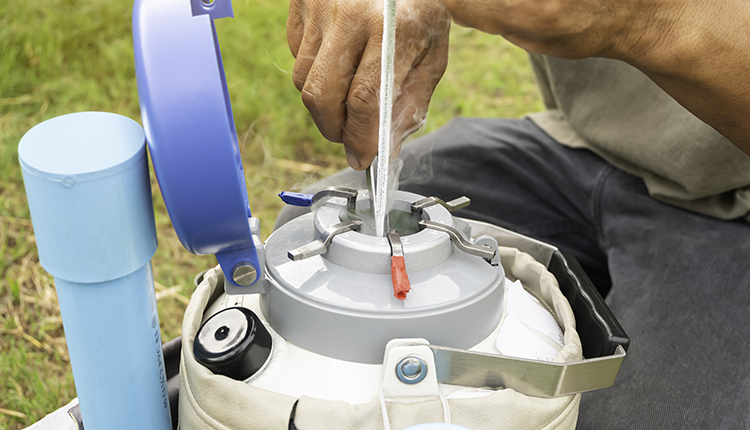
On Tuesday, December 6, nearly 79 million dairy animals will receive updated U.S. genetic evaluations – commonly called “proofs.” The Council on Dairy Cattle Breeding (CDCB) delivers these official U.S. evaluations for all eligible animals three times a year, updating genetic values for 50 individual traits and four selection indexes.
Based on these U.S. evaluations, animals, bull semen, and embryos are marketed worldwide. Producers use the genetic predictions to identify the best parents of the next generation, manage breeding programs, and improve their herds.

Now, producers also have genetic tools for calving and fertility, disease resistance, livability, and feed efficiency. These newer traits have been developed through discovery research, producer cooperation to record animal performance, and innovations like genomics and genotyping.
Emerging genetic opportunities
What other meaningful improvements can be made through genetic selection? That’s the ongoing question at CDCB, and we answer it through research and input from our producer advisory group, industry collaborators, board of directors and research partners like the USDA Animal Genomics and Improvement Laboratory (AGIL).
Our national genetic selection goals should address the needs of the dairy cow, producers, processors, milk buyers, and consumers. Those needs are evolving, with today’s consumers increasingly concerned with animal welfare and environmental impacts of food production.
To answer “what’s next,” our mission is to identify traits that are important on dairy farms, have genetic variation in the current population, can be accurately measured, and help maintain or improve the appeal of dairy products in the marketplace.
As we look to 2023 and beyond, here are the top five developments in U.S. dairy genetic traits, in no specific order.
1. Hoof health traits
Genetic selection for better hoof health is one opportunity to reduce lameness, which affects about 50% of dairy cows and results in economic losses, poor health, and suboptimal animal welfare. CDCB, the University of Minnesota College of Veterinary Medicine, and other collaborators are working on hoof health genetic and management tools to reduce lameness. To identify and measure a genetic trait, a data pipeline is necessary to capture hoof health observations (phenotypes), genotypes, and general production and management information. We are working with hoof trimmers, veterinarians, and producers to collect consistent and credible observations of hoof lesions and mobility issues through hoof trimming records, on-farm management software, and technologies like video analytic platforms.
2. Milking speed
Producers actively use milking speed metrics to guide management and economic decisions; however, the U.S. currently has genetic evaluations for milking speed only for Brown Swiss and based on a score system. Our long-term goal is to provide accurate, low-cost genomic evaluations for milking speed that can be predicted at birth, and to measure milking speed through quantitative data collected in all breeds through modern milking systems. Work is underway to clearly define the trait and identify the relevant data types and quality assurance measures to standardize and integrate these data into the existing CDCB national evaluation system.
3. Resistance to Johne’s disease
We are exploring genetic selection to help reduce the incidence of Johne’s disease, a chronic, contagious condition that challenges animal health and profitability on many farms. Data provided by Dairy Records Management System and AgSource allowed us to investigate factors that influence the incidence of Johne’s disease, analyze currently available data, and estimate the genetic variance in the U.S. cow population. Early results suggest there is potential for a Johne’s-resistant trait in Jerseys and Holsteins, and we are taking next steps to develop this trait. CDCB evaluations of genetic resistance are already available for six other common disorders – displaced abomasum, hypocalcemia (milk fever), ketosis, mastitis, metritis and retained placenta – in Holstein, Jersey and Brown Swiss.
4. Continued feed efficiency improvement
The Feed Saved trait debuted in December 2020 to enable dairy producers to breed for more feed-efficient cows, save on feed costs, and reduce dairy’s environmental footprint. Cows vary in their ability to convert feed to milk, and Feed Saved documents those differences. The goal is to identify specific cows that eat less than expected while maintaining production and body condition. For genomic evaluations, the necessary data on individual animals – daily feed intake, milk yield, milk composition, body weight, and body condition score – must be measured for a genotyped reference population. We continue to add more, newer data into the CDCB database, which increases the heritability of the trait and accuracy of the Feed Saved evaluations. While feed efficiency is difficult and expensive to measure, it is certainly valuable as feed is the number one expense on farms.
5. Mitigating methane emissions
Global warming has become a worldwide priority, and cattle have been positioned as a significant contributor to greenhouse gas emissions. Despite our personal opinions on how much cows should be blamed for climate change, customers and policymakers expect the dairy industry to minimize enteric methane emissions. Mitigating emissions involves a series of new herd management practices, and genetics certainly plays a major role. A consortium of universities is seeking funds to collect methane emission data on a comprehensive number of genotyped, lactating cows. This will allow the development of national genomic evaluations for methane emissions so we can identify and breed for lower emitting cows.
The bottom line
CDCB and our collaborators continue to research and develop new traits and enhanced genetic evaluations that will benefit dairy farmers and the global dairy industry. For more on our research projects, visit https://uscdcb.com/current-research/. Meanwhile, watch for updated genetic evaluations on December 6 at www.uscdcb.com and reports through Hoard’s Dairyman and industry organizations.








